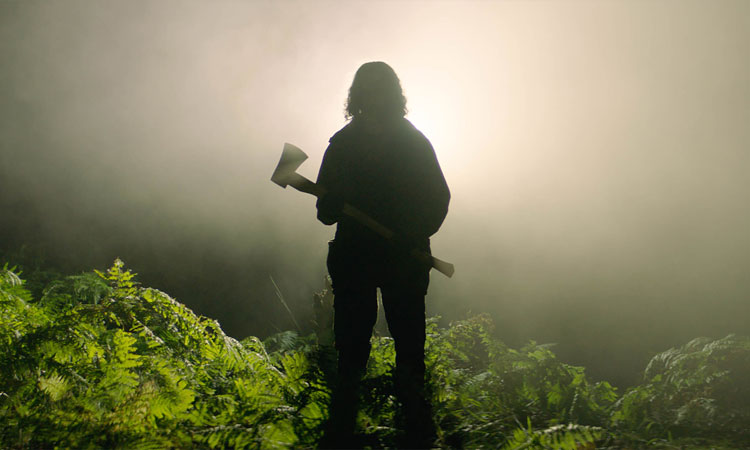Written and shot during lockdown, In the Earth (Ben Wheatley’s follow up to his Rebecca adaptation) integrates a deadly pandemic into its plot. But rather than focus on the fear and death it produces, Wheatley uses instead the resulting isolation to create unnerving horror.
The film begins as Dr. Martin Lowery (Joel Fry) arrives at a scientific camp outside a forest. After testing to ensure he has not been contaminated, Martin embarks with colleague Alma (Ellora Torchia, seen in Ari Aster’s Midsommar) on a trek through the forest towards the camp of another researcher (Hayley Squires) who has stopped communicating with the base. It is on that long journey alone among the trees that things begin to go wrong for Martin and Alma: they are attacked in the night, their gear goes missing, and Zach (Reece Shearsmith), the kindly eccentric who rescues them, turns out not to be kind at all.
Wheatley’s brand of black comedy and sarcasm highlights the ridiculous quality of escalating events without denying their horrific nature, erupting in moments of extreme body horror. This oscillation between flippancy and in-your-face gore is crucial to the film’s disorientating power, where we come to doubt whether Zach is purely mad or if more ancient forces could be at work.
Because they tend to be funny, Wheatley’s horror films rely heavily on performance: Fry is effortlessly amusing as the wide eyed ‘hero’ of the story, his ineptitude counterbalanced by Torchia’s strong will, while Shearsmith’s calm paranoia is a distressing delight. Nick Gillespie’s raw cinematography and Wheatley’s choppy editing complement Clint Mansell’s droning, harsh score to create an anxious edginess that recalls Kill List.
Though In the Earth does not reach the same exhilarating heights as that film and gets rather lost in the woods, its unbridled nastiness is a genuinely bracing, cathartic pleasure.
In The Earth was seen and reviewed at Sundance Film Festival 2021.
